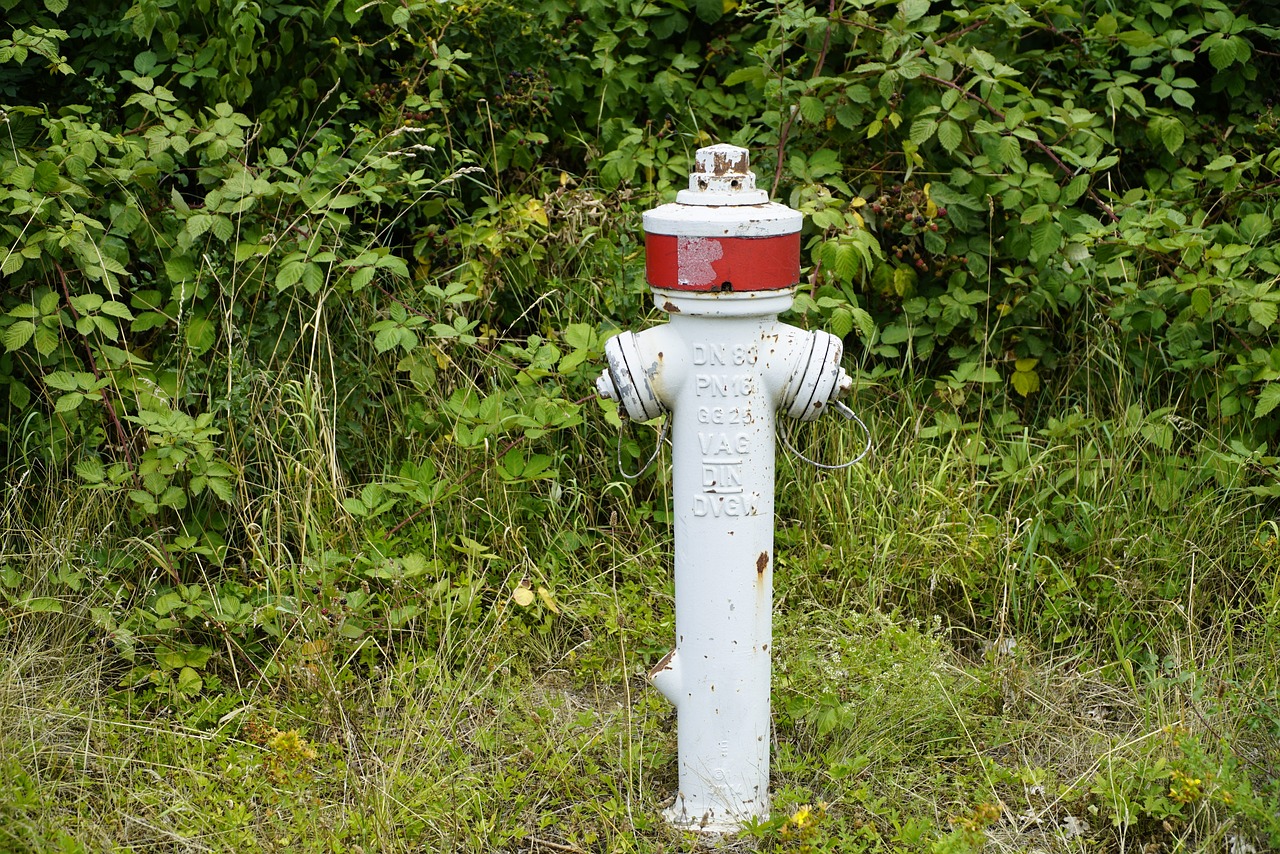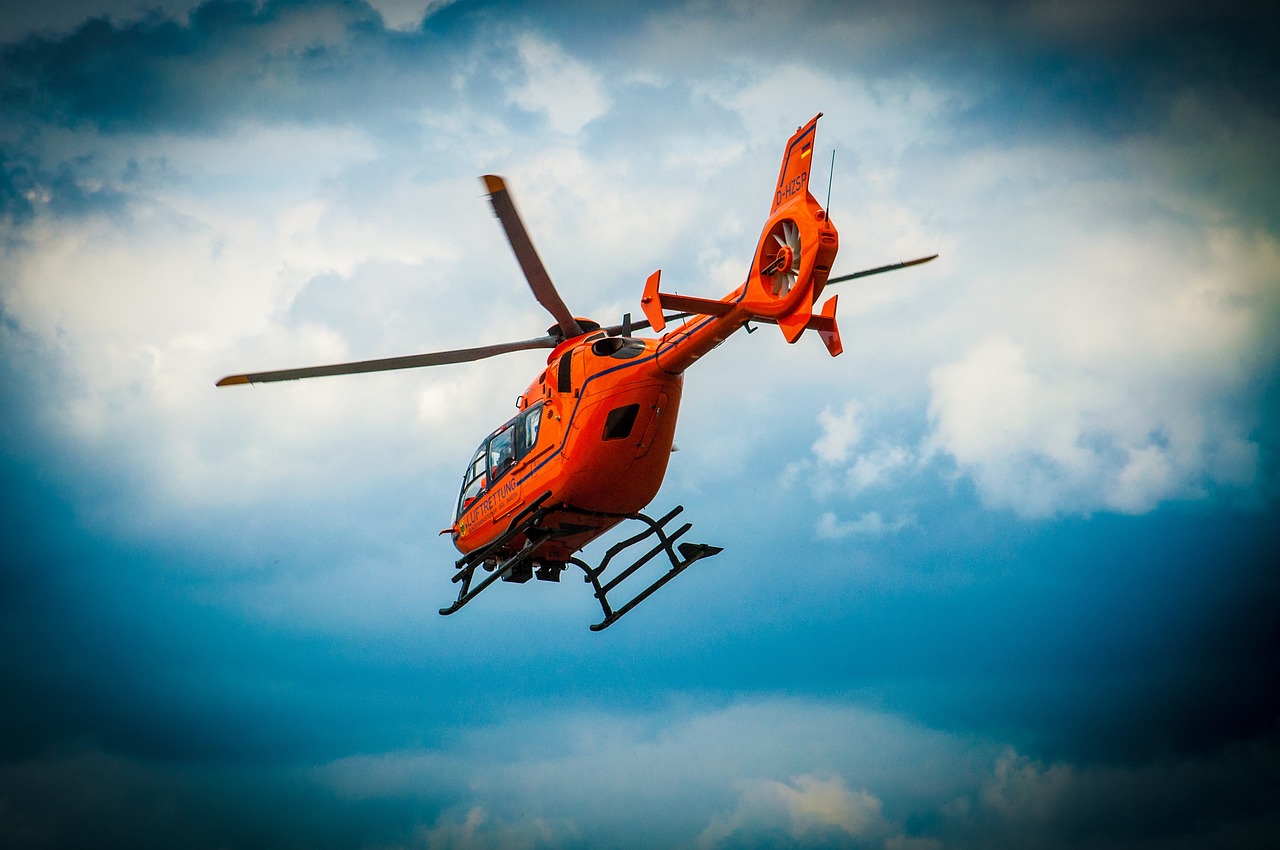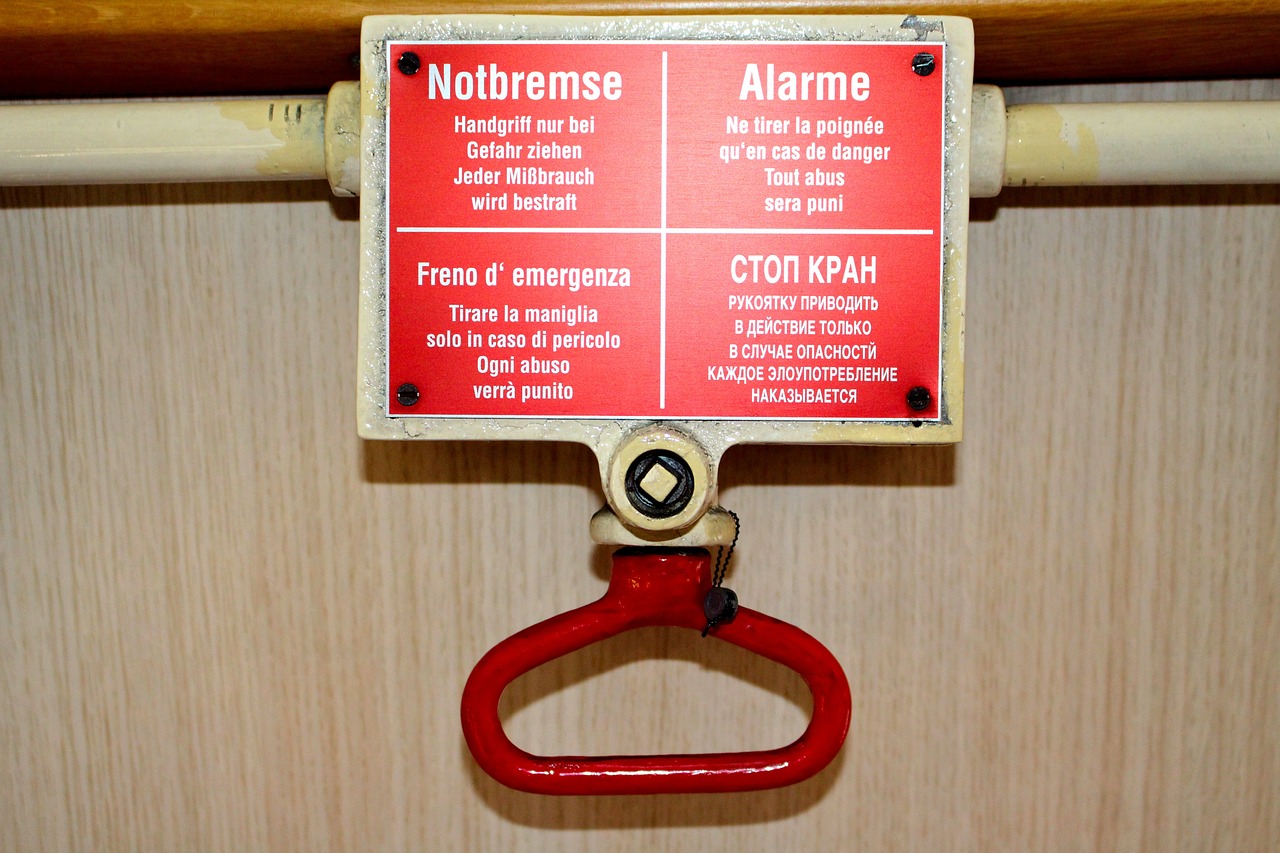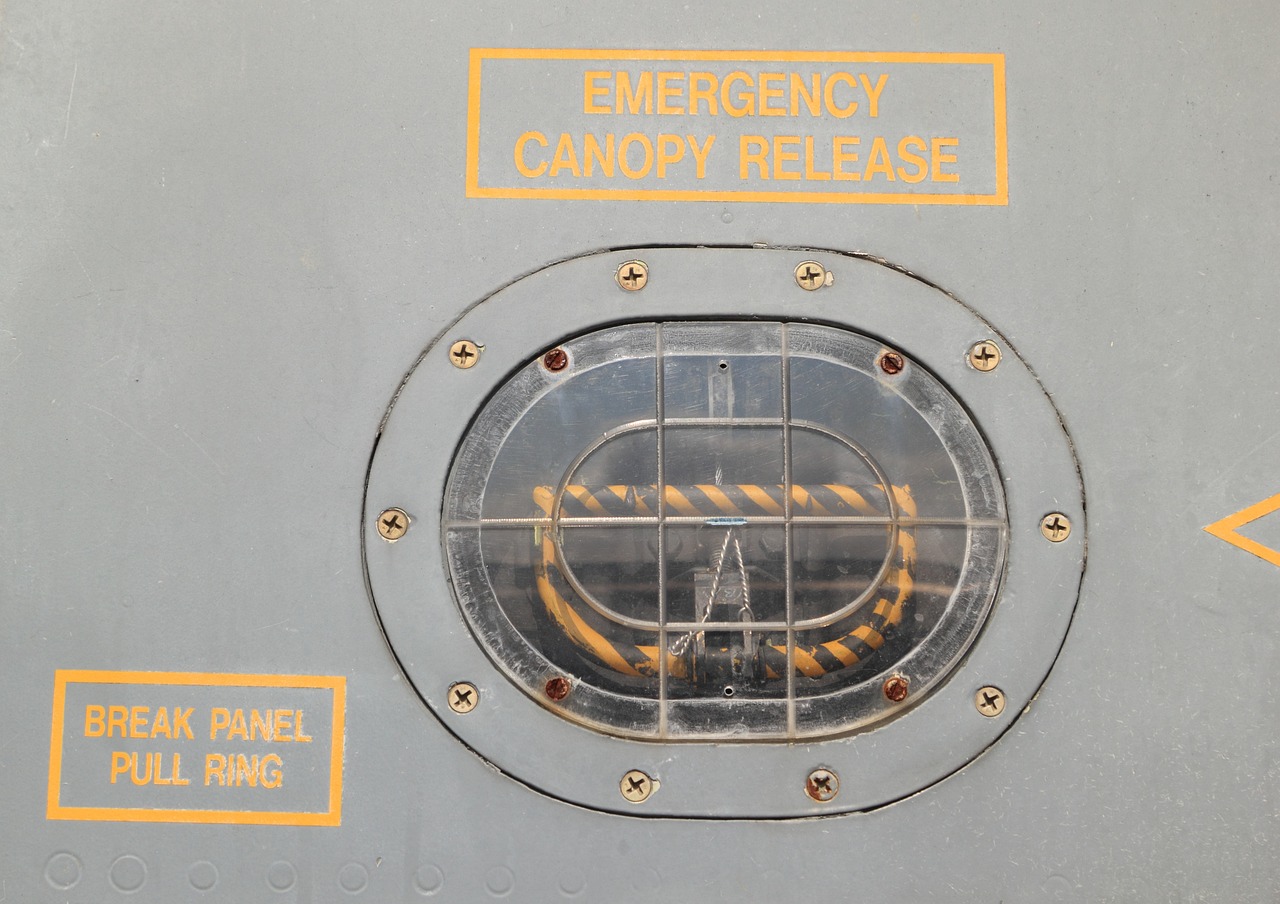Emergency Preparedness for People with Disabilities
In a world where emergencies can strike at any moment, being prepared is not just a luxury; it’s a necessity. For individuals with disabilities, the stakes are even higher. Imagine being in a situation where every second counts—how would you feel if your unique needs weren’t considered? This article explores the essential strategies and resources needed to ensure that individuals with disabilities can effectively prepare for and respond to emergencies, safeguarding their health and safety. By understanding the unique challenges faced by people with disabilities, we can create a more inclusive approach to emergency preparedness.
Recognizing the specific challenges faced by people with disabilities during emergencies is crucial for effective preparedness. Disabilities can range from physical impairments to cognitive challenges, each requiring tailored planning. For instance, someone with mobility issues may struggle to navigate crowded evacuation routes, while a person with hearing impairments might miss crucial verbal announcements. Understanding these nuances is the first step in crafting an emergency plan that truly works. It’s about more than just having a plan; it’s about having the right plan that caters to diverse needs.
Developing a personalized emergency plan is vital for individuals with disabilities. Think of it as your very own safety roadmap. This segment discusses key components to include, such as communication strategies and evacuation routes tailored to specific needs. For example, consider creating a plan that identifies safe meeting points, accessible transportation options, and even the specific assistance required from family or friends. The more detailed your plan, the better prepared you’ll be.
Effective communication is essential during emergencies. How can you ensure that you receive critical information when it matters most? This part covers various methods and tools that can enhance communication for individuals with hearing, vision, or cognitive impairments. For example, utilizing text alerts or social media updates can provide timely information for those who may not hear alarms. It’s about finding what works best for you and ensuring that your support network is on the same page.
Utilizing visual and auditory aids can significantly improve understanding during emergencies. This section highlights helpful tools and technologies designed to assist individuals with sensory impairments. For instance, consider using apps that provide real-time alerts in a format that suits your needs, whether that’s through vibrations, visual signals, or clear audio instructions. The goal is to make sure everyone is informed and ready to act, regardless of their sensory abilities.
Maintaining an updated list of emergency contacts is crucial. Imagine being in an emergency situation and not having the right people to turn to. This segment emphasizes the importance of having reliable individuals who can assist during emergencies and how to ensure they are informed of your needs. Regularly review and update your contacts, and make sure they know about your specific requirements. It’s like having a safety net—one that you can rely on when the unexpected happens.
Evacuation can pose unique challenges for people with disabilities. Navigating through a chaotic environment can be daunting, but it doesn’t have to be. This section discusses strategies to ensure safe and efficient evacuation, including identifying accessible routes and transportation options. For instance, familiarize yourself with your building’s emergency exits and their accessibility features. Don’t wait until an emergency occurs to figure out your escape route; practice makes perfect!
Regular training and drills are essential for preparedness. Think of it as a rehearsal for the unexpected. This part focuses on the importance of practicing emergency scenarios and how organizations can facilitate inclusive training for people with disabilities. Engaging in drills not only builds confidence but also helps identify any gaps in your plan. The more familiar you are with the procedures, the less likely panic will set in when the real deal happens.
Community resources play a vital role in emergency preparedness. Local organizations and services can provide invaluable support and information for individuals with disabilities. Whether it’s workshops on emergency preparedness or resources for creating personalized plans, tapping into these community assets can enhance your readiness. Don’t hesitate to reach out and ask for help; after all, it takes a village to ensure everyone’s safety!
Engaging with local emergency services is crucial for effective planning. Have you ever thought about how first responders would know your specific needs in an emergency? This part discusses how individuals can work with first responders to ensure their needs are understood and met during emergencies. Establishing a relationship with local fire departments, police, and medical services can be a game-changer. Make sure they are aware of your situation and how they can assist you.
Recovery after an emergency can be particularly challenging for individuals with disabilities. It’s not just about surviving the event; it’s about bouncing back. This section outlines strategies and resources available to assist with post-emergency recovery and support. From mental health resources to physical rehabilitation services, knowing where to turn can make all the difference. Remember, recovery is a journey, and having the right support network can help you navigate it more smoothly.
Q: What should I include in my emergency kit?
A: Your emergency kit should include essential medications, a first-aid kit, communication devices, water, non-perishable food, and any necessary personal items tailored to your needs.
Q: How often should I review my emergency plan?
A: It’s a good idea to review your emergency plan at least twice a year or whenever there are changes in your circumstances or support network.
Q: What resources are available for people with disabilities during emergencies?
A: Many local organizations offer resources such as emergency preparedness workshops, accessible transportation options, and information on community support services.

Understanding the Unique Needs
When it comes to emergency preparedness, understanding the unique needs of individuals with disabilities is not just important—it's essential. Each person's situation can vary widely, depending on the type and severity of their disability. For instance, someone who is visually impaired may require different resources and strategies compared to someone with a mobility impairment. Recognizing these differences is the first step in crafting an effective emergency plan.
People with disabilities often face challenges that can complicate their response to emergencies. These challenges can include, but are not limited to:
- Physical limitations: Individuals with mobility impairments may find it difficult to navigate through crowded spaces or to use standard evacuation routes.
- Communication barriers: Those with hearing or speech impairments may struggle to receive or convey critical information during a crisis.
- Medical needs: Many individuals with disabilities rely on specific medical equipment or medications that must be considered during an emergency.
Moreover, the environment plays a significant role in how individuals with disabilities experience emergencies. For example, an urban setting may offer more accessible resources, such as public transportation and emergency services, while a rural area might pose additional challenges due to distance and limited accessibility. Understanding these contextual factors is crucial for effective planning.
To further illustrate the diverse needs, consider the following table that outlines various types of disabilities and their implications for emergency preparedness:
| Type of Disability | Implications for Emergency Preparedness |
|---|---|
| Mobility Impairments | Need for accessible routes and transportation; potential challenges with stairs and uneven surfaces. |
| Visual Impairments | Dependency on tactile and auditory information; need for clear, accessible signage. |
| Hearing Impairments | Need for visual alerts and communication devices; potential challenges in hearing alarms or announcements. |
| Cognitive Impairments | May require simplified instructions and repeated information; need for additional time to process information. |
Ultimately, the goal of understanding these unique needs is to foster an environment where individuals with disabilities can feel safe and prepared during emergencies. By tailoring emergency plans to address specific challenges, we can ensure that everyone has the opportunity to respond effectively, regardless of their circumstances. This approach not only empowers individuals but also strengthens the entire community's resilience in the face of emergencies.

Creating an Emergency Plan
Creating an emergency plan is not just a good idea; it’s a lifeline for individuals with disabilities. When the unexpected strikes, having a well-thought-out plan can make all the difference between chaos and calm. So, how do you go about crafting this essential roadmap? First, it’s important to understand that your emergency plan should be as unique as you are. Tailoring it to your specific needs ensures that you can respond effectively to any situation that arises.
Start by identifying your specific needs and potential challenges you may face during an emergency. For instance, consider any mobility issues you might have, the need for medical equipment, or communication barriers. This understanding will help you outline the critical components that should be included in your plan. A great way to visualize this is to create a personalized emergency plan document that you can easily refer to in times of need.
Your emergency plan should include several key components:
- Communication Strategies: Determine how you will communicate during an emergency. Will you rely on text messages, phone calls, or perhaps visual aids? Make sure to have a backup plan in case your primary method fails.
- Evacuation Routes: Identify accessible routes that are safe for you to use. If you use a wheelchair, for example, ensure that your evacuation route is free from obstacles.
- Emergency Contacts: Keep a list of individuals who can assist you during an emergency. This list should include family members, friends, or caregivers who understand your needs and can help you evacuate if necessary.
Another crucial aspect of your emergency plan is to have a designated meeting place where you can gather with your support network after an evacuation. This location should be easily accessible and known to everyone involved in your plan. Think of it as your safe harbor in a storm; a place where you can regroup and ensure everyone is accounted for.
It’s also a good idea to practice your emergency plan regularly. Just like a fire drill at school, rehearsing your evacuation and communication strategies can help you feel more comfortable and prepared when the real deal happens. Involve your family or support team in these drills to ensure everyone knows their role and responsibilities. By doing this, you are not just preparing for emergencies; you are building a sense of community and support around you.
Lastly, make sure to keep your emergency plan updated. Life changes, and so do your needs. Whether you move to a new location, change your medical equipment, or even add new members to your support network, it’s vital to revisit and revise your plan regularly. An outdated plan can be just as ineffective as having no plan at all.
In summary, creating an emergency plan is an empowering step towards ensuring your safety and well-being during unexpected situations. By tailoring your plan to your unique needs, practicing regularly, and keeping it updated, you can navigate emergencies with confidence and ease.
Q: What should I include in my emergency contact list?
A: Your emergency contact list should include family members, friends, caregivers, and any medical professionals who are familiar with your needs. Make sure they know how to assist you during an emergency.
Q: How often should I practice my emergency plan?
A: It’s a good idea to practice your emergency plan at least twice a year. This helps ensure that everyone involved is familiar with their roles and responsibilities.
Q: What should I do if my needs change?
A: If your needs change—whether due to a new medical condition, a change in mobility, or any other factor—be sure to update your emergency plan accordingly. Regular reviews will help keep your plan effective.

Communication Strategies
Effective communication during emergencies is not just beneficial; it is absolutely essential, especially for individuals with disabilities. Imagine being in a chaotic situation where clear instructions and information are paramount. How do you ensure that everyone understands what to do? The answer lies in tailored communication strategies that cater to diverse needs. For individuals with hearing impairments, visual aids such as text messages and sign language interpreters can bridge the gap. For those with vision impairments, audible alerts and tactile maps can provide critical information in real time. It's like having a well-oiled machine where every part works harmoniously to ensure safety and clarity.
Additionally, cognitive impairments can complicate communication, making it vital to simplify information. Using clear, concise language and repeating instructions can help those who may struggle with processing information quickly. Incorporating technology can also enhance communication; apps that provide real-time updates and alerts can be life-saving. Think of these tools as your safety net, ensuring that everyone, regardless of their ability, receives the information they need to stay safe.
Furthermore, establishing a communication plan before an emergency strikes is crucial. This plan should include:
- Designated communication methods (text, phone calls, visual signals)
- Identification of key contacts who can assist
- Regular updates to ensure that everyone is informed of any changes in needs or preferences
By proactively addressing communication strategies, individuals with disabilities can navigate emergencies with greater confidence and clarity. It’s not just about having a plan; it’s about ensuring that every voice is heard and every need is met, turning potential chaos into a well-coordinated response.

Visual and Auditory Aids
When it comes to emergencies, having the right tools can be a game changer, especially for individuals with sensory impairments. are essential in ensuring that everyone receives critical information quickly and effectively. Imagine being in a crowded space during an emergency—how would you ensure that someone who is deaf or hard of hearing understands the evacuation instructions? This is where these aids come into play.
Visual aids can include items like flashlights with strobe lights or colored filters that can grab attention, while auditory aids might involve devices that amplify sound or alert users through vibrations. For individuals with hearing impairments, vibrating alarms or text-based alerts can be lifesavers. These devices can be programmed to send messages directly to a smartphone, ensuring that no one is left in the dark.
Moreover, consider the use of captioning services during emergencies. Many organizations can provide real-time captions for announcements, which can be displayed on screens or through personal devices. This allows individuals with hearing impairments to stay informed about the situation without missing crucial details. Additionally, for those with vision impairments, tactile maps can be invaluable. These maps allow individuals to feel their way around a space, identifying exits and safe zones.
Another innovative solution is the use of mobile applications designed specifically for emergency situations. These apps can offer features like audio descriptions, vibrational alerts, and even visual cues to guide users during an emergency. They can be a bridge between chaos and clarity, providing a sense of control when it’s needed most.
Ultimately, the integration of these visual and auditory aids into emergency preparedness plans is not just beneficial; it's essential. By ensuring that everyone has access to the information they need, we can create a safer environment for all. Remember, in the midst of an emergency, every second counts, and having the right tools at your disposal can make all the difference.
- What are visual aids? Visual aids are tools that help convey information through visual means, such as images, signs, or text, making it easier for individuals with sensory impairments to understand emergency instructions.
- How do auditory aids work? Auditory aids enhance sound for individuals with hearing impairments, which can include amplification devices or alarms that provide alerts through vibrations or sounds.
- Can mobile apps assist during emergencies? Yes, many mobile apps are designed to provide real-time alerts, descriptions, and guidance during emergencies, helping individuals navigate safely.
- Why are tactile maps important? Tactile maps allow individuals with vision impairments to feel their way around an area, helping them identify exits and safe routes during an emergency.

Emergency Contacts
Maintaining an updated list of is crucial for individuals with disabilities. Think of this list as your lifeline during a crisis; it should include reliable individuals who are familiar with your specific needs and can provide assistance when it matters most. Imagine being in a situation where every second counts, and you have someone on speed dial who knows exactly how to help you. This kind of preparedness can make a world of difference.
When creating your emergency contact list, consider including a variety of individuals such as family members, friends, neighbors, and caregivers. Each contact should be someone you trust and who understands your unique situation. It's also important to ensure that these contacts are aware of your needs and the best ways to assist you. For instance, if you have a mobility impairment, let your contacts know how they can help you navigate stairs or other obstacles in an emergency.
Here’s a simple format you can use to organize your emergency contacts:
| Name | Relationship | Phone Number | Special Instructions |
|---|---|---|---|
| Jane Doe | Sister | (123) 456-7890 | Knows how to assist with mobility issues. |
| John Smith | Neighbor | (098) 765-4321 | Available during the day; has a wheelchair. |
| Mary Johnson | Caregiver | (555) 123-4567 | Trained in first aid and CPR. |
It's also wise to keep a copy of this list in multiple locations. Store one on your phone, another in your wallet, and perhaps a printed version in a prominent place at home. In the chaos of an emergency, having quick access to your contacts can save precious time. Plus, consider sharing your emergency plan with your contacts so they understand their roles. This can be especially helpful if you have specific medical needs that require immediate attention.
Lastly, don’t forget to regularly review and update your contact list. Life changes, and so do your relationships and circumstances. Ensuring that your emergency contacts are current can help you avoid unnecessary complications during an emergency. So, take a moment today to sit down, review your list, and make any necessary updates. Remember, being prepared is not just about having a plan; it’s about having the right people on your side when you need them the most.
- What should I include in my emergency contact list? Your list should include names, relationships, phone numbers, and any special instructions relevant to your needs.
- How often should I update my emergency contacts? Regularly review your list, ideally every six months or whenever there are significant changes in your life.
- Can I have more than one emergency contact? Absolutely! It's advisable to have multiple contacts to ensure you have options in case one is unavailable.

Evacuation Considerations
When it comes to emergencies, evacuation can be a daunting task, especially for individuals with disabilities. It’s essential to think about the unique challenges they may face during such stressful situations. Imagine being in a crowded building where the alarms are blaring, and everyone is rushing to get out. For someone with mobility issues, this chaotic scene can be overwhelming and even dangerous. Therefore, planning for evacuation is not just a precaution; it’s a necessity.
One of the first steps in creating an effective evacuation plan is to identify accessible routes. This means knowing which exits are wheelchair-friendly and ensuring that pathways are clear of obstacles. It’s also wise to familiarize oneself with the layout of the building, including the location of elevators and ramps. For individuals who may require assistance, having a buddy system in place can be a lifesaver. This involves designating a friend or family member who knows your specific needs and can help guide you to safety.
Transportation is another critical aspect of evacuation. In some cases, public transport may not be accessible during an emergency. Therefore, it’s important to have a backup plan in place. This could include having a reliable friend or neighbor who can provide transportation or knowing the contact information for local services that offer accessible transportation options. In fact, keeping a list of these contacts handy can save precious time when every second counts.
Moreover, practicing evacuation drills can make a world of difference. Just like fire drills in schools, individuals with disabilities should participate in regular evacuation drills tailored to their specific needs. This practice can help reduce anxiety and build confidence, making the actual process smoother when an emergency arises. Consider reaching out to local organizations that specialize in disability services; they often provide training and resources that can enhance your preparedness.
In summary, evacuation considerations for people with disabilities involve a multifaceted approach. By identifying accessible routes, establishing a reliable support system, planning transportation, and participating in drills, individuals can significantly improve their chances of a safe evacuation. Remember, in the face of an emergency, preparation is your best ally!
- What should I include in my emergency kit?
Make sure to pack essential items such as medications, water, non-perishable food, a flashlight, batteries, and any necessary mobility aids. - How can I ensure my emergency plan is effective?
Regularly review and practice your plan with family and caregivers to keep everyone informed and prepared. - Who can I contact for assistance during an emergency?
Have a list of reliable contacts, including friends, family, and local organizations that specialize in disability support. - What resources are available for accessible transportation?
Research local services that offer accessible transport options and keep their contact information readily available.

Training and Drills
Regular training and drills are not just beneficial; they are essential for emergency preparedness, especially for individuals with disabilities. Think of it like practicing for a big game; the more you train, the better prepared you are to handle unexpected situations. Emergency scenarios can be chaotic and stressful, so having a plan in place can make all the difference. It's not just about knowing what to do; it's about feeling confident in your ability to respond when it matters the most.
One effective way to ensure that individuals with disabilities are prepared is through inclusive training programs. These programs should cater to various needs, ensuring that everyone can participate and learn effectively. For instance, training sessions can incorporate different learning styles and methods, such as hands-on practice, visual demonstrations, and verbal instructions. This multifaceted approach helps to cater to individuals with different disabilities, ensuring that everyone leaves the training feeling empowered and informed.
Moreover, conducting regular drills is crucial. Just like fire drills in schools, practicing emergency evacuations can help individuals with disabilities understand the process and feel more comfortable when the real situation arises. It's important to create a safe environment where participants can ask questions and express any concerns they may have. This encourages open communication and builds a sense of community among participants, which is invaluable during actual emergencies.
In addition, consider collaborating with local organizations that specialize in disability services. These organizations often have resources and expertise that can enhance training efforts. They can provide instructors who are knowledgeable about specific disabilities, ensuring that the training is relevant and effective. Furthermore, they can assist in organizing drills that simulate real-life emergencies, making the experience as realistic as possible.
To illustrate the importance of training and drills, here’s a simple table that summarizes key elements that should be included in any emergency preparedness training program:
| Key Element | Description |
|---|---|
| Hands-On Practice | Engage participants in physical activities that simulate emergency scenarios. |
| Visual Aids | Use diagrams, charts, and videos to enhance understanding of the procedures. |
| Feedback Sessions | Allow participants to share their thoughts and experiences after drills to improve future training. |
| Community Involvement | Involve local organizations to provide additional support and resources. |
Ultimately, the goal of training and drills is to create a culture of preparedness. When individuals with disabilities feel confident in their ability to respond to emergencies, it not only enhances their safety but also fosters a sense of independence. So, let’s roll up our sleeves and get to work! Remember, preparedness is a journey, not a destination, and every step taken today can make a significant difference tomorrow.
- Why are drills important for individuals with disabilities?
Drills help individuals practice their emergency response skills, making them more confident and prepared for real situations. - How can I find inclusive training programs?
Look for local organizations that specialize in disability services or contact community centers that may offer such programs. - What should I include in my emergency plan?
Your plan should include communication strategies, evacuation routes, and a list of emergency contacts.

Community Resources
When it comes to emergency preparedness, serve as a lifeline for individuals with disabilities. These resources not only provide essential information but also offer practical support to ensure that everyone can navigate emergencies effectively. Local organizations, advocacy groups, and government agencies often play pivotal roles in this ecosystem. They can help you understand your rights, access necessary tools, and connect with others who share similar experiences.
For individuals with disabilities, the first step is to identify the resources available in your community. Many local chapters of national organizations focus on disability advocacy and emergency preparedness. These organizations often provide training sessions, workshops, and informational materials tailored to specific needs. For example, the National Disability Rights Network offers resources that empower individuals to advocate for themselves during emergencies.
Furthermore, community centers often host events that educate the public about emergency preparedness. These events can be a great opportunity to meet others and learn about local resources. Many centers also provide accessible facilities and can help organize drills that include everyone, ensuring that no one is left behind in an emergency situation.
Another invaluable resource is the local fire department and emergency services. Many departments offer programs specifically designed to assist individuals with disabilities. These may include:
- Personalized emergency plans
- Home safety assessments
- Training on how to communicate specific needs during an emergency
In addition, local hospitals and health care facilities often have programs aimed at assisting those with disabilities during emergencies. They can provide information about accessible medical services and transportation options. It's also wise to keep a list of these resources handy, as having immediate access to this information can make a significant difference during a crisis.
Lastly, online platforms and social media groups dedicated to disability advocacy can be excellent sources of information. They often share updates about local resources, events, and tips for emergency preparedness. Engaging with these online communities can also provide emotional support, as individuals share their experiences and strategies.
In summary, leveraging is crucial for effective emergency preparedness. By connecting with local organizations, participating in community events, and utilizing available services, individuals with disabilities can enhance their readiness and ensure a safer environment for themselves and their families.

Collaborating with Emergency Services
When it comes to emergency preparedness, collaboration with local emergency services is not just beneficial; it's essential. Individuals with disabilities often face unique challenges during crises, and by working closely with first responders, they can ensure their specific needs are understood and met. Imagine being in a situation where every second counts, and knowing that the people coming to help you are already aware of your requirements can provide a sense of security that is invaluable.
Establishing a relationship with emergency services begins with open communication. It’s important to reach out to local fire departments, police, and emergency medical services to discuss your specific needs. This proactive approach can help ensure that first responders are familiar with your situation, whether it's mobility challenges, medical conditions, or communication barriers. Think of it as building a bridge that connects you with those who are trained to assist you in times of crisis.
Additionally, consider organizing a meeting or a workshop with emergency service providers. This can be an excellent opportunity to educate them about your needs and share any relevant information that might help them during an emergency. For instance, you could provide them with a Personal Emergency Profile, which includes:
| Information Type | Description |
|---|---|
| Medical Conditions | List any medical conditions that first responders should be aware of. |
| Mobility Needs | Specify if you require assistance with mobility devices or have difficulty moving. |
| Communication Preferences | Indicate how you prefer to communicate during an emergency (e.g., sign language, written notes). |
| Emergency Contacts | Provide a list of people who can be contacted in case of an emergency. |
Moreover, regular participation in community emergency drills can also enhance collaboration. By engaging in these drills, you not only familiarize yourself with the procedures but also allow emergency personnel to observe and adapt their response strategies to better accommodate individuals with disabilities. This practice can be akin to rehearsing for a play; the more you practice, the more seamless the performance will be when the time comes.
Another important aspect of collaboration is the use of technology. Many emergency services now utilize apps and platforms that allow for real-time communication and updates. By leveraging these tools, individuals with disabilities can receive timely information about emergencies, evacuation routes, and other critical updates. It’s like having a personal assistant who keeps you informed and ready to act when necessary.
In conclusion, collaborating with emergency services is about creating a safety net tailored to the unique needs of individuals with disabilities. By fostering strong relationships, sharing vital information, participating in drills, and utilizing technology, you can ensure that emergency responders are well-equipped to provide the necessary assistance during a crisis. Remember, preparedness is a team effort, and every step taken towards collaboration can make a world of difference when it matters most.
- How can I find out more about my local emergency services?
You can visit your local government website or contact your city hall for information about emergency services in your area.
- What should I include in my Personal Emergency Profile?
Your profile should include medical conditions, mobility needs, communication preferences, and emergency contacts.
- Are there any community resources available for people with disabilities?
Yes, many local organizations offer resources and support for individuals with disabilities in emergency situations. Check with local advocacy groups or community centers.

Post-Emergency Recovery
Recovering from an emergency can be a daunting task, especially for individuals with disabilities. The aftermath of a crisis often leaves emotional scars and physical challenges that can significantly affect one’s ability to return to normalcy. It’s essential to understand that recovery is a process, not a race. Just like a flower that takes time to bloom after a storm, individuals need the right support and resources to flourish again.
One of the first steps in post-emergency recovery is accessing medical care. For individuals with disabilities, this can mean ensuring that their specific health needs are met. Whether it’s medication refills, therapy sessions, or specialized medical equipment, having a clear plan in place is crucial. It might be helpful to create a recovery checklist that includes all necessary medical appointments and supplies needed for a smooth recovery. Here’s a simple example:
| Item | Description | Contact Information |
|---|---|---|
| Primary Care Physician | Regular check-ups and medication management | (555) 123-4567 |
| Physical Therapist | Rehabilitation exercises and support | (555) 987-6543 |
| Equipment Supplier | Replacement or repair of mobility aids | (555) 234-5678 |
Another important aspect of recovery is emotional support. Individuals with disabilities may experience heightened anxiety or stress after an emergency. It’s vital to cultivate a network of friends, family, and professionals who can provide reassurance and understanding. Support groups can also be a valuable resource, allowing individuals to share their experiences and coping strategies. Remember, it’s okay to ask for help; it’s a sign of strength, not weakness.
Moreover, staying informed about available community resources can significantly aid recovery. Many local organizations offer assistance tailored to the needs of individuals with disabilities. This could range from housing support to financial aid or even counseling services. Engaging with these resources not only provides practical help but also fosters a sense of community and belonging.
Lastly, advocacy plays a crucial role in post-emergency recovery. Individuals with disabilities should feel empowered to advocate for their needs and rights. This can involve communicating with local officials about accessibility issues in disaster response or seeking accommodations in recovery programs. By voicing their concerns, individuals can help shape a more inclusive environment for everyone.
In summary, post-emergency recovery for individuals with disabilities requires a multifaceted approach that includes medical care, emotional support, community resources, and advocacy. It’s a journey that takes time and resilience, but with the right strategies in place, individuals can rebuild their lives and emerge stronger than before.
- What should I do immediately after an emergency?
First, ensure your immediate safety and the safety of others. Assess any injuries and seek medical attention if necessary. Then, begin accessing your emergency plan. - How can I find support groups in my area?
Local community centers, hospitals, or disability advocacy organizations often have information about support groups. Online platforms can also be a resource for connecting with others. - What resources are available for mental health support?
Many organizations offer counseling services specifically for individuals with disabilities. Check with local mental health clinics or hotlines for immediate assistance.
Frequently Asked Questions
- What should I include in an emergency plan for individuals with disabilities?
When creating an emergency plan, it's essential to include personalized communication strategies, evacuation routes that are accessible, and a list of emergency contacts who are aware of your specific needs. Tailoring these elements ensures that you can respond effectively during an emergency.
- How can I improve communication during an emergency?
Improving communication during an emergency can be achieved by utilizing various tools such as visual aids for those with hearing impairments, or auditory devices for individuals with vision impairments. Additionally, consider using simple language and clear instructions to ensure everyone understands the situation.
- What evacuation strategies should I consider?
Evacuation strategies should focus on identifying accessible routes and reliable transportation options. It's crucial to plan ahead and practice these routes, ensuring that you know where to go and how to get there safely, especially in a time of crisis.
- Why are training and drills important?
Training and drills are vital because they prepare individuals for real-life emergency scenarios. Regular practice helps to build confidence and familiarity with the emergency plan, making it easier to react quickly and effectively when an actual emergency occurs.
- What community resources are available for emergency preparedness?
Many local organizations provide resources and support for individuals with disabilities. These may include training programs, information on accessible services, and connections to emergency responders who are trained to assist individuals with unique needs during emergencies.
- How can I collaborate with emergency services?
Engaging with local emergency services is crucial. You can schedule meetings with first responders to discuss your specific needs and ensure they have a clear understanding of how to assist you during emergencies. Building this relationship beforehand can lead to more effective support when it matters most.
- What should I do after an emergency?
Post-emergency recovery can be challenging, but it's important to seek out available resources such as counseling services, support groups, and community programs that specialize in assisting individuals with disabilities. These resources can provide the necessary support to help you navigate the recovery process.



















